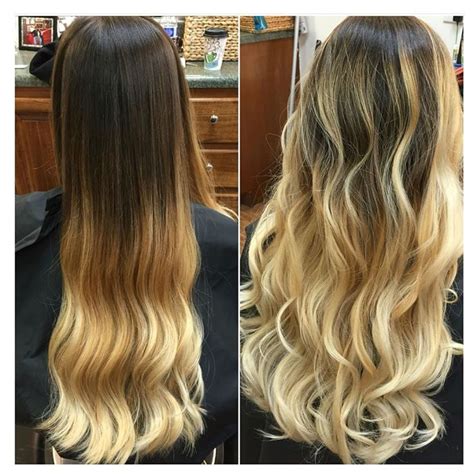Balayage vs Ombre: The Key Differences
| Feature | Balayage | Ombre |
|---|---|---|
| Application Method | Hand-painted freehand | Gradient blending |
| Result | Sun-kissed, natural-looking highlights | Gradual transition from dark to light |
| Maintenance | Requires touch-ups every 12-16 weeks | Needs frequent root touch-ups and color correction |
| Price | Typically more expensive | Generally more affordable |
Balayage: The Natural Approach
Balayage is a French technique that translates to “sweeping.” It involves hand-painting hair with bleach or lightener to create subtle, sun-kissed highlights. Unlike traditional highlights, balayage blends seamlessly into the natural hair color, giving a low-maintenance, lived-in look.

Why Balayage Matters:
- Creates a natural and effortless style
- Enhances hair texture and dimension
- Suitable for all hair types and colors
- Requires less frequent touch-ups
Benefits of Balayage:
- Low maintenance and easy to grow out
- Customizable to suit individual preferences
- Doesn’t require harsh chemicals or foils
- Enhances hair growth and shine
Ombre: The Gradual Transition
Ombre is a gradient hair color technique that blends two or more shades from dark to light. The transition is usually more dramatic than balayage, creating a statement look. Ombre is often applied to longer hair to showcase the color progression.
Why Ombre Matters:
- Creates a bold and eye-catching style
- Adds depth and volume to hair
- Suitable for darker hair colors
- Requires frequent maintenance
Benefits of Ombre:
- Customizable to create various color combinations
- Can be toned to adjust the color intensity
- Relatively easy to maintain at home
- Can help hide gray hair
How to Choose Between Balayage and Ombre
Consider the following factors:
- Desired style: Balayage for natural-looking highlights, Ombre for a bold gradient
- Hair type and color: Ombre is better for darker hair, balayage is more versatile
- Maintenance: Balayage requires less frequent touch-ups, Ombre needs more upkeep
- Budget: Balayage is typically more expensive than Ombre
How to Step-by-Step
Balayage
- Section hair into small pieces.
- Apply balayage paste to the desired areas using a brush or comb.
- Leave the paste on for the recommended time.
- Rinse and dry hair.
- Tone and style as desired.
Ombre
- Divide hair into two sections.
- Apply dark base color to the roots.
- Blend lightener into the mid-lengths and ends.
- Process and rinse hair.
- Tone and cut to refine the transition.
Conclusion
Balayage and Ombre are both versatile hair coloring techniques that can enhance your style. Consider your desired look, hair type, and maintenance requirements to make an informed decision. Whether you prefer natural highlights or a dramatic gradient, there’s a technique that will suit your individual needs.
FAQs
Q: Can I do balayage or ombre at home?
A: While it’s possible to attempt at home, it’s highly recommended to visit a professional stylist for optimal results.
Q: Which technique lasts longer?
A: Balayage typically lasts longer than Ombre because the highlights are blended more seamlessly into the natural hair color.
Q: Can I use both balayage and ombre on my hair?
A: Yes, but it’s important to consult with a stylist to determine if this combination will complement your hair type and style.
Q: How much does balayage or ombre cost?
A: The cost can vary depending on the length, thickness, and condition of your hair, as well as the salon you choose.
